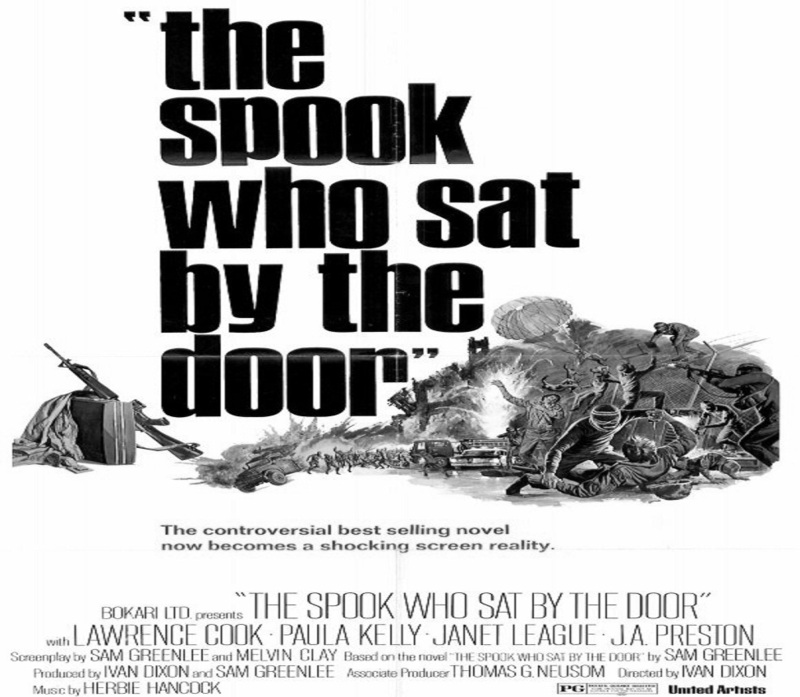The Spook Who Sat By the Door (1973)
Dublin Core
Title
Description
The middle page of the promotional material for The Spook Who Sat By the Door shows a collage of chaos and action. In the forefront one can see a masked man holding down another man’s arm in a fight, a man next to him with a gun, and behind both men is another man flailing his arms in the air and falling to the ground as if he has been shot in the back. These images represent the violence and action scenes predominant in the film. The movie culminates in violent riots that speak to the unrest and racial tensions in urban areas of the time in which the film was produced. The Spook Who Sat By the Door is marketed as a typical Blaxploitation film through the use of violent imagery, but it does not show fantastical and negatively stereotyped black figures and scenes, ultimately straying from the typical Blaxploitation formula.
According to Ed Guerrero Blaxploitation films “centered on black narratives, featured black casts, playing out various action-adventures in the ghetto” (69). The Spook Who Sat By the Door follows this format. The main character, Dan Freeman, promotes Black Nationalist sentiments and represents what it means to be black in a white dominated society through his stifled attempts to gain respect in the CIA. This coupled with the riots, violence, and bank robberies in the South Side of Chicago, helps the movie follow the script of what a Blaxploitation film is.
However, this movie strays from this category by showing non-fantastical images and portraying a cohesive group, rather than the individualized heroes one usually sees in films from this genre. For example, the genre’s premier film, Sweet's Sweetback Badassss Song, was criticized for the negative black stereotypes it promoted, like a black community of “dope pushers, pimps, and prostitutes,” and for endorsing “individual acts of resistance conceived in confusion and executed in panic” (Terry 95). In contrast, The Spook Who Sat By the Door promotes a sense of teamwork and education in order to reach the end goal of freedom. In the film, Freeman educates urban youth and helps them work together rather than fight for themselves on the streets. Half way through the movie Freeman and one of the young men he is leading have a discussion. When the young man, Pretty Willie, explains that he does not need a college degree because it is only a status symbol, Freeman responds “get your education…because that is the only thing that the white man cannot take away from you.” This sentiment to educate oneself, especially in an urban environment, is not seen in other Blaxploitation films.
The idea that one must use education and work together is another unique component of The Spook Who Sat By The Door. Behind the fighting and gun toting men on the poster is a scene of youths on the street using their education and training to further their cause and fight for freedom. The poster depicts two men handing something off to one another and behind them is a large group of people walking together and fighting as one. This teamwork can be seen throughout the film, most prominently during the training scenes when Freeman teaches those in his own neighborhood the lessons he learned at the CIA. Although on the surface this film seemed to be typical Blaxploitation genre, it strayed from the formula in important and effective ways.
Acham, Christine, Infiltrating Hollywood: The Rise and Fall of the Spook Who Sat by the Door, USA 2011.
Greenlee, Sam, The Spook Who Sat By the Door, Bokari USA, 1973.
Guerrero, Ed, Framing Blackness: the African American Image in Film, Temple University Press, 1993.
Terry, John, "Towards the Gendering of Blaxploitation and Black Power", University of Wisconsin, Milwaukee, 2012.
Van Peebles, Melvin, Sweet Sweetback’s Badasssss Song, USA 1971.
